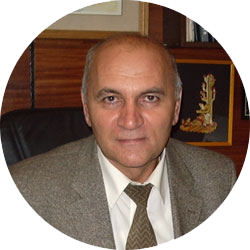
A device to electrochemically treat water
RF Patent # 2078737. Claimed on 26.05.1994, published on 10.05.97. Authors: V. M.Bakhir, Yu. G. Zadorozhny.
Flow-through electrochemical module reactor – FEM-3 module. FEM-3 module, in spite of its similarity to FEM-2 module in the principle of its application in electro-chemical systems, technically has an absolutely new design, and essentially differs from its prototype – FEM-2 module. FEM-3 module, unlike FEM-2 and FEM-1 modules, is devoid of problems arising in connection with the presence of bi-polar areas on the sur-face of external electrode, and it surpasses FEM-1 and FEM-2 modules in its mechanic, hydraulic and electrochemical reliability and durability. FEM-3 modules can be used to implement any technological processes developed for FEM-1 and FEM-2 modules. Simultaneously, engineering and economic parameters of these processes become better. However, FEM-1 and FEM-2 modules cannot be used in process flowsheets developed with regard to FEM-3 modules either due to reasons making such re-placement technically and technologically impossible, or because engineering and economic parameters of processes carried out using FEM-1 or FEM-2 modules, ap-pear worse than if FEM-3 modules are employed.
The practice of FEM-3 module operation suggests that it is from the moment of developing a reliable, versatile and easy-to-use electrochemical reactor that tech-nology of electrochemical activation in particular, and technology of “individual” applied electrochemistry in general, originate.

Electrochemical unit of STEL- Nerl device.
STEL- Nerl device for producing anolyte with рН below 4 and catholyte with рН above 12 from formation water for oil and gas production facilities. Electrochemical reactor consists of 96 FEM-3 modules. Output – 1000 l/h of anolyte and 1000 l/h of catholyte. Consumed power – 6000 W. Moscow, VNIIIMT, 2002.
